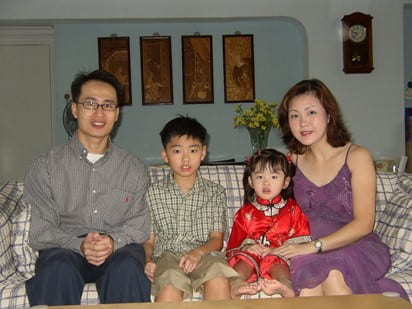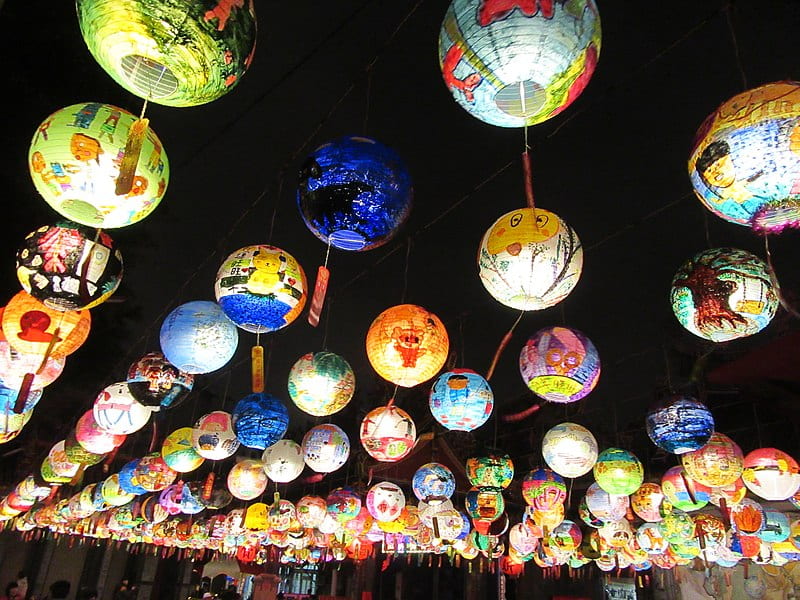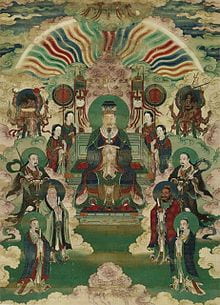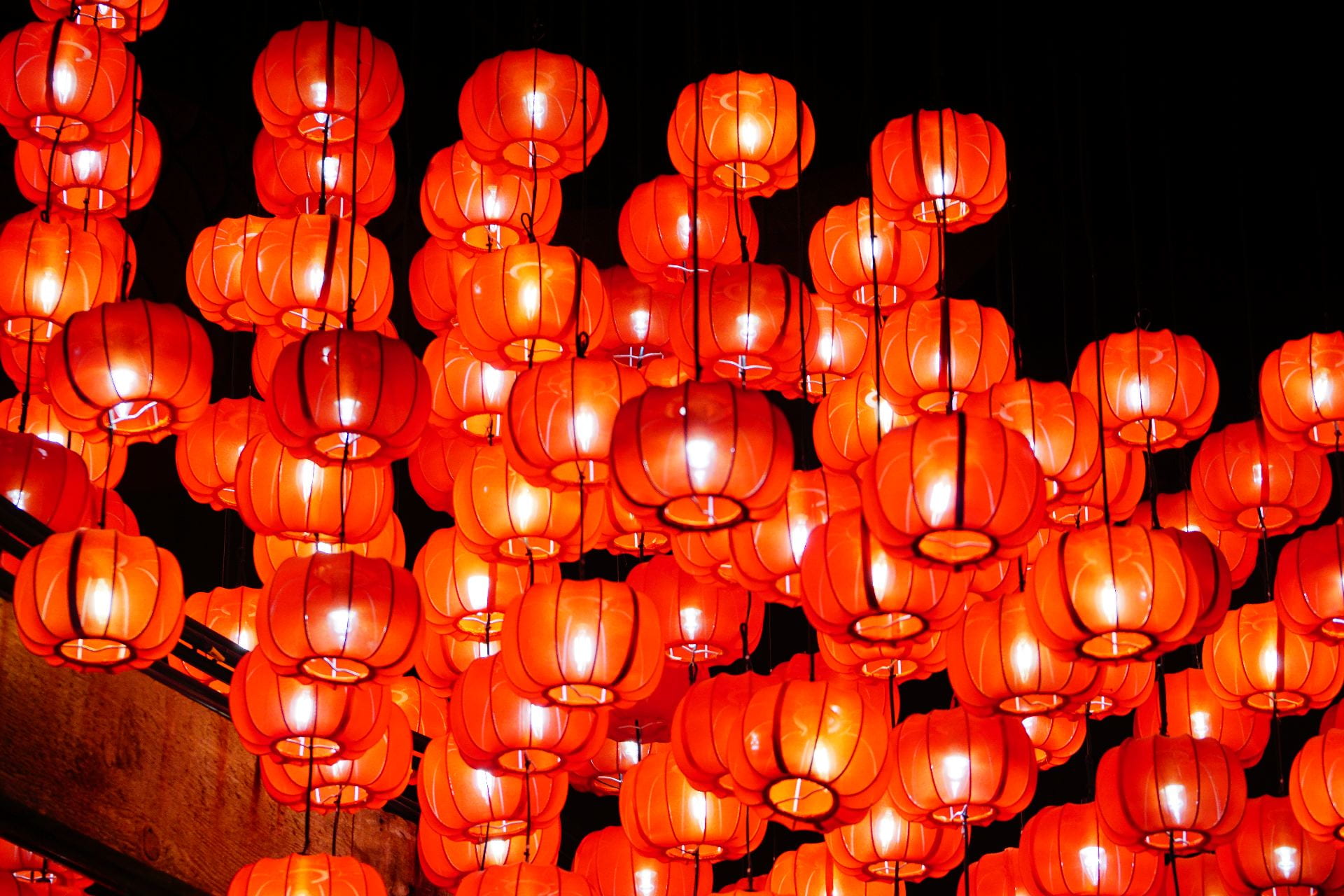
Celebrating Community and Traditions:
Exploring the Chinese New Year
The Museum houses material culture from around the globe, including multiple Asian countries. In this blog series, a Campus Community Contributor expands our usual lens beyond objects from the collections to better appreciate the people and communities associated with material culture at the Museum.
Contributor: Alison Fong is a junior Honors College student majoring in history, international and global studies with a concentration in peace, human rights, and security, and Asian studies and minoring in East Asian history and politics. Originally born in Singapore before moving to Phoenix, Arizona in 2010, Alison is involved on campus as a member of the University of Arkansas Museum Advisory Council, an Honors College Ambassador, and a member of Sigma Iota Rho. After college, Alison desires to pursue a masters in Global & Asian history and further her knowledge of diversity, equity, and inclusion.
An Introduction to the Chinese New Year
As new 2021 calendars are added to our desks at home, you might notice a certain day that seems to change with each passing year. It only occupies one day in our calendar, and it is not even a public holiday. Beyond the fact that it celebrates the new year of a certain country, many don’t really know or understand much about it. Laba Festival (腊八节: Làbā jié) – December 8 (Lunar Calendar) Laba Festival: 黛 欧. Laba congee with ingredients. Wikimedia Commons. The Laba Festival traditionally marks the beginning of preparations for Chinese New Year, and it is often celebrated in northern China. Ironically, it is a pagan festival that has integrated into Daoism and Buddhism. Memorial ceremonies at shrines for local deities (particular door gods) and ancestors are celebrated on this day to pray for a good harvest and good fortune. Laba congee (腊八粥: Làbā zhōu), a mixture of seven grains boiled over a period of time, is eaten on this day to remind ourselves to be grateful for what we have. New Year’s Eve (除夕: Chúxì) – December 30th (Lunar Calendar) New Year’s Eve: Jan. Lo Hei. Wikimedia Commons. At times, New Year’s Eve will also fall on the 29th day of December in the lunar year, but it is otherwise known as the 30th of the year (大年三十: Dà nián sān shí). On this day, families gather for the Reunion Dinner, where they devour delicious dishes that also wish for good fortune and an abundance of luck and wealth. Everyone tries to stay up until midnight to ring in the new year. Little Year (小年: Xiǎo nián) – December 23rd (Lunar Calendar) Little Year: Caitriana Nicholson. business putting up decorations for CNY. Flickr. Historically, Little Year was celebrated on different days depending on one’s occupation: government officials celebrated on the 23rd, common folk on the 24th, and fishermen on the 25th. Now, it signals the start of nationwide house cleanings that “sweep away the bad luck” (扫年: Sǎo nián) and the beginning of houses and streets decorated in red and gold. From the start of the Little Year to New Year’s Eve, everyone rushes into supermarkets and malls to buy their new clothes, ingredients and snacks, and decorations for the new year. Spring Festival/Chinese New Year (春节: Chūn jié/农历新年: Nónglì Xīnnián) – January 1st (Lunar Calendar) Chinese New Year’s Day: evelynquek. CNY snacks. Flickr. The day begins with the loud popping of firecrackers and an exchange of greetings and blessings between neighbors. Although there are no particular activities on this day, Chinese New Year in Singapore is celebrated for two and a half days during which families would visit near and distant relatives to wish them a happy new year. Children receive red packets containing various amounts of cash from their elders. For some families, who have dozens of relatives on either side of the family, an excel spreadsheet is used to plan which houses have or have not been visited and on what day they must be seen. Meanwhile, from now until the Lantern Festival, each day has a specific festival and rites that must be performed such as Day of the Human (人日: Rén rì) and Providence Health (天公生: Tiān gōng shēng). Lantern Festival Preparations – January 12th – 14th (Lunar Calendar) Prep for Lantern Festival: Lillakanarie. Nagasaki Lantern Festival 2009. Flickr. During this time, people will buy lanterns and make light sheds to celebrate the Lantern Festival. There is a superstitious saying attached to these days: “make noise on the 11th, build light sheds on the 12th, light the lantern on the 13th, light is bright on the 14th, a full moon on the 15th, end the light on the 16th.” Lantern Festival (元宵节: Yuán xiāo jié) – January 15th (Lunar Calendar) Lantern Festival: Jason, blog writer. tang yuan or yuan xiao. Feast to the World Blog. The Lantern Festival marks the last day of Chinese New Year. It used to last 10 days in the Ming dynasty, but now it only lasts for 5 days. During the festival, lanterns are created, and people can solve the Lantern Riddles (猜灯谜: Cāi dēng mí), which are written on the lanterns hung around homes and streets. Glutinous rice balls (汤圆: Tāngyuán) that may contain various kinds of filling within them are eaten for dessert, representing reunion. Lastly, gazing at the full moon amidst the bright lanterns is one more activity to celebrate the Lantern Festival.
Laba Festival (腊八节: Làbā jié) – December 8 (Lunar Calendar)

New Year’s Eve (除夕: Chúxì) – December 30th (Lunar Calendar)

Little Year (小年: Xiǎo nián) – December 23rd (Lunar Calendar)

Spring Festival/Chinese New Year (春节: Chūn jié/农历新年: Nónglì Xīnnián) – January 1st (Lunar Calendar)

Lantern Festival Preparations – January 12th – 14th (Lunar Calendar)
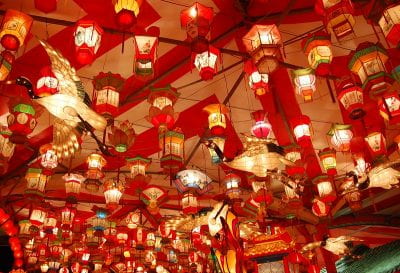
Lantern Festival (元宵节: Yuán xiāo jié) – January 15th (Lunar Calendar)

Click individual timeline dates to learn more!
However, in certain cities across the United States with a large Asian community, you might see people in lion costumes jumping on each other’s shoulders and prancing around to the loud and exciting beating of drums and clashes of cymbals. You might also spot swaths of Asian families congregating in traditional Chinese restaurants, and the scent and sights of delicious plates of food crowding the glass lazy Susan in the middle of white-clothed tables. Perhaps a larger indication that this simple holiday on your calendar may not just be a one-day affair is when you walk into Chinatown a month before the holiday and observe the beginnings of red decorations with gold-embossed Chinese characters or banners with Chinese idioms draping street-lights or plastered to storefronts.
In Singapore, where I was born and raised for a decade before moving to the United States, Chinese New Year is the official name of this celebration. In mainland China, it is called the Spring Festival (春节), while in Hong Kong, it is referred to as the Lunar New Year. The difference in terminology depends on the country of celebration, and it expresses the variety of customs that surround this holiday. Countries with a major ethnically Chinese population, such as Singapore, Malaysia, and etc., tend to share certain customs, while countries such as South Korea and Vietnam tend to have their own adapted traditions with similar undertones that reference their Chinese origins. These numerous names for a shared tradition reflect the pluralism and the multiculturalism of Chinese New Year.
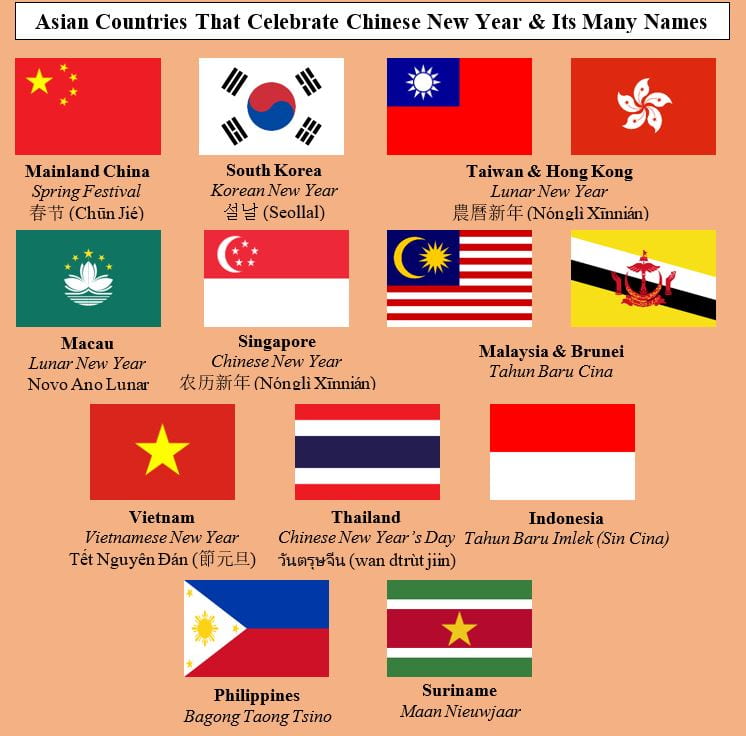
Much of the traditions and customs that I will address in this seven-part mini-series reflect my ethnically Chinese upbringing as a Singaporean, as it is what I know best. However, I hope that while my personal perspective becomes an open window into my culture and my memories of a beloved celebration, it also becomes a point of curiosity that extends into the other cultures that enjoy and celebrate this holiday.
Join me as I explore seven themes of Chinese New Year that are integral to understanding how important the celebration is to both culture and community.
Part 1: Family
The Reunion Table
Part 4: Memory
Diary of an Immigrant
Part 3: Material Culture
The Color Red
Part 6: Renri
Everybody’s Birthday
Extra Resources
- Chinesenewyear.net: This website updates every year with information on the coming lunar new year.
- Chinese Calendar Online: To see if it’s a good day to clean your house, get married, build a house, or hold a funeral, check out this online lunar calendar.
Image Attributions
Introduction Page:
- Dileep Kaluaratchie. “Chinese New Year Celebrations with Lanterns in Singapore.” Wikimedia Commons.
- Alison Fong. “Asian Countries That Celebrate Chinese New Year and Its Many Names” visual.

